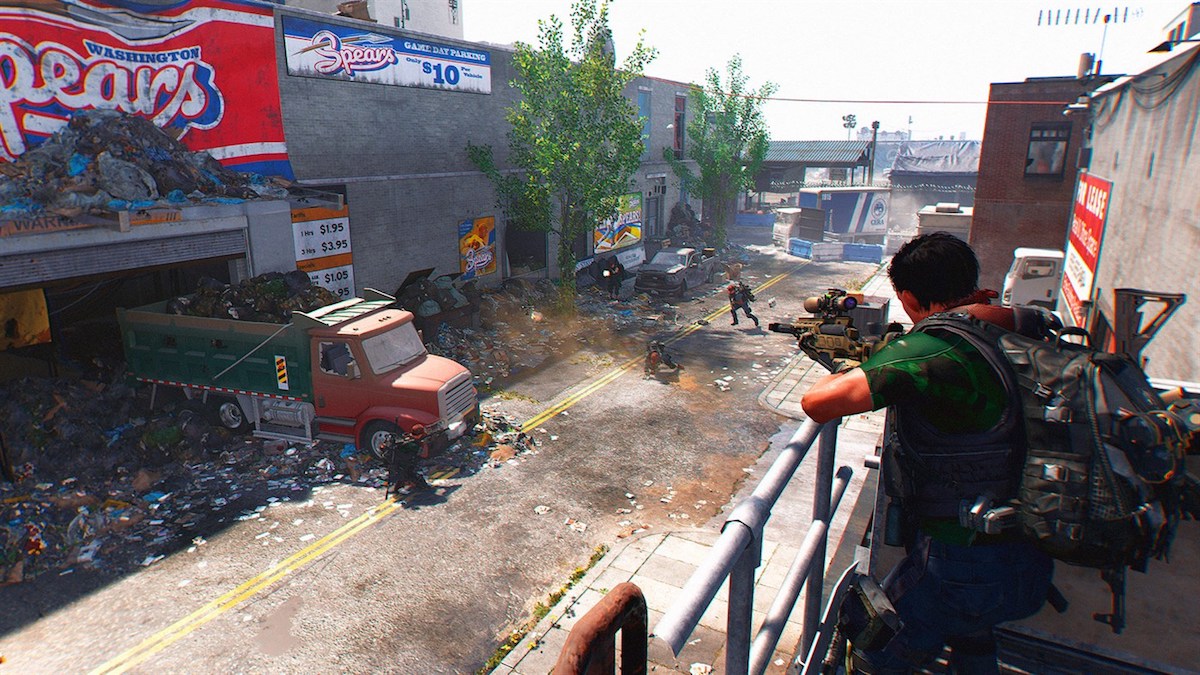For such a big console, the Xbox Series X is pretty small. On paper, it has a 1TB SSD for internal storage, but 198GB of that is set aside for the operating system and other essential files. Couple that with the fact that games are bigger now than ever — the new Call of Duty will top out at more than 130GB on Series X — and you can see how the remaining 802GB can quickly get eaten up.
Meanwhile, the Xbox Series S has just 512GB of storage space, of which you can only use 364GB. It’s true that, as Xbox boss Phil Spencer told Kotaku last month, some Xbox games are smaller on the Series S than on the Series X. Gears 5, for instance, clocks in at just 55GB on the S compared to 71GB on the X, while Sea of Thieves is a whopping 30GB smaller on the paperback-sized machine. (Others, like Gears Tactics and Watch Dogs: Legion, are the same size.) Still, no matter what new Xbox you end up with, storage management is critical.
[referenced id=”1191566″ url=”https://www.kotaku.com.au/2020/11/xbox-series-x-the-kotaku-review-2/” thumb=”https://www.gizmodo.com.au/wp-content/uploads/sites/3/2020/11/06/toh7gmfzqawmiffv7kc21-300×169.jpg” title=”Xbox Series X: The Kotaku Review” excerpt=”The Xbox Series X does not feel like the kind of machine we usually get at the start of a new generation, when we’re used to clean breaks with radical new hardware that basically starts our time with a PlayStation, Xbox, or Nintendo device over.”]
The second-best thing you can do to expand your storage is to invest in an external hard drive. These days, you can get 1TB of storage for under $US50 ($69). Once you find one that does the trick — I use a standard-issue 1TB Western Digital Elements external hard drive — plug it into your console. You’ll likely be prompted to reformat it to store games. Do so, and then follow these steps:
- Open up your settings and head to the “System” menu.
- Click on “storage.”
- You should be able to select either your internal storage or your connected external device. Click on “internal.”
- In the resulting menu, select “move or copy.”
- You’ll see a list of all the games currently stored on console. Select those you want to move to an external drive and hit “move selected.” (To keep the games in both locations, hit “copy selected” instead. If your goal is to free up space, there’s no reason to do this.)
- That’s it!
Your best bet here is to move over all of your backward compatible games. Next-gen versions of games — and, when they exist, at some point 71 years in the future, full-on next-gen games — aren’t playable from an external hard-drive. Xbox One games are. What’s more, yes, you can store Xbox Series S and X games on an external hard drive. You just can’t play them. This is true even for Xbox One games that have simply been patched to run better on Xbox Series S and X. Indeed, when I moved Gears 5 — one of 30 games that will have next-gen optimizations available at launch — to my external drive, I was told that I’d need to move the game back to internal storage if I wanted to play it.
And get this: I moved the Xbox One version of Forza Horizon 4 — which is some 15GB smaller than the Xbox Series X version — onto my external hard drive. When I tried to play it on my Xbox Series X, I was prompted to download an update. Otherwise, the system said, I wouldn’t be allowed to play it, suggesting that the Xbox Series X won’t even play last-gen versions of games that have available next-gen optimizations. So don’t get that idea in your head.
There’s also the more expensive option: Microsoft’s proprietary 1TB expansion card for the Xbox Series X and S. Since it’s an expansion card, rather than a more traditional external storage device, it’ll allow you to store and play any games, including next-gen offerings, without issue. It costs $US220 ($301).

Beyond ballooning your usable storage, there are a few steps you can take to free up space on your new Xbox. The difference is marginal — but hey, every byte counts, right?
Under “my games and apps,” scroll down to “Manage” and click on the “free up space” option. You should see a list of any leftover add-ons. That’ll pull up any files remaining for games you’ve installed and then uninstalled from your console. For me, it amounted to a grand total of [drum roll, followed by a triumphant horn triplet] 30MB of Watch Dogs: Legion bonus packs. You might see more fruitful gains.
Beneath that roundup of leftover digital gunk, you’ll see a list of “shrinkable games.” On the Xbox One, this option essentially allowed you to peel away any unnecessary assets for the game you play. When I checked on my Xbox Series X, no games showed up. This tracks; the Series X is Microsoft’s technological powerhouse, and makes use of all those slick 4K textures whenever possible. A colleague’s Xbox Series S also turned up an empty list.
You can also reduce the size of your screenshots and clips. Head to your settings and open your “preferences” menu. Click on “capture and share.” You can tweak some of these settings so your screenshots and captured video don’t take up so much space. Some suggestions:
- Only allow game captures by you, rather than by you or games. It’s a small thing, but it gives you total control over what does or doesn’t get captured.
- Lower the “record what happened” time to 15 seconds, so you’re not always recording half a minute (or more) of video every time you do so.
- Make sure the game clip resolution is set to 1080p. The system will limit how much video you can record at certain resolutions: three minutes of 720p, one minute of 1080p, and 30 seconds of 4K. But you don’t need a calculator to know that 4K video takes up more space than 1080p.
Finally, you can take the babiest of baby steps and purge local saved data from your console. Warning: Only do this if you consistently connect to Xbox Live. Save data tends to be far smaller than game assets — we’re talking megabytes, not gigabytes — but it does add up. Since Xbox Live automatically syncs your save data to the cloud, clearing it locally shouldn’t pose an issue for how you play. It’ll just sync up next time you play your game while connected to Xbox Live.
Personally? I’d never do this; I’ve sunk too many hours into too many games to bet it all on some server farm in Redmond. The potential gains in free space are too minimal to justify the risk. But if the option entices you, if you’re really itching to clear up that marginal extra space, you can do so by opening up your settings, scrolling down to “System,” clicking on “Storage,” and choosing “Clear local saved games.”
Of course, if none of the above works, you could always just do the single best thing to free up storage space: See how you like some smaller games! Xbox Game Pass, which is available on the Xbox Series S and X, has a lot to offer on that front.
More Xbox Series X:
[referenced id=”1191603″ url=”https://www.kotaku.com.au/2020/11/how-the-xbox-series-xs-quick-resume-feature-works-and-doesnt-work/” thumb=”https://www.gizmodo.com.au/wp-content/uploads/sites/3/2020/11/06/a4omvavlzwk3hxku9hod-300×170.jpg” title=”How The Xbox Series X’s ‘Quick Resume’ Feature Works” excerpt=”Among all of the next-gen features touted for the Xbox Series X (and S), few are more promising than Quick Resume. On paper, Quick Resume grants you the ability to juggle several games in a suspended state at a system level, at which point you can load them in seconds,…”]
[referenced id=”1191699″ url=”https://www.kotaku.com.au/2020/11/heres-how-fast-games-load-on-the-xbox-series-x-and-s/” thumb=”https://www.gizmodo.com.au/wp-content/uploads/sites/3/2020/11/06/uya7rhx0o4u9a4yjsmvg-300×169.png” title=”Here’s How Fast Games Load On The Xbox Series X And S” excerpt=”Much ado has been made about the guts of the Xbox Series X and S, two new next-gen consoles Microsoft will release next week. It’s all “velocity architecture” this and “teraflops” that — technical stuff Microsoft says will cut loading times dramatically. But lingo and lofty promises are secondary to…”]
[referenced id=”1191599″ url=”https://www.kotaku.com.au/2020/11/ask-us-anything-about-xbox-series-x-and-s/” thumb=”https://www.gizmodo.com.au/wp-content/uploads/sites/3/2020/11/06/bewky3gp68b7hellehju-300×169.jpg” title=”Ask Us Anything About Xbox Series X And S” excerpt=”It’s Thursday, November 5, our Xbox Series X and S review is up, and the embargo has fallen. It’s time to ask us anything you want to know about the new Xboxen, and we’ll answer as best we can.”]

Leave a Reply